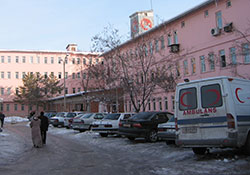Hospital resilience and safety

WHO
WHO/Europe implements measures and develops policies for the strengthening of health facilities’ resilience and safety.
Worldwide hundreds of hospitals and health facilities are destroyed or damaged every year in disasters. When a hospital fails, the affected communities are left without even basic emergency care. Keeping a hospital safe from natural or human-made threats goes beyond protection of its physical structure. It requires preservation of its infrastructure as well as a health workforce trained to keep the facilities operational. Even in the event of a disaster, a safe hospital remains accessible and able to function at maximum capacity, providing its services to the community when they are most needed.
WHO/Europe is continuously conducting hospital vulnerability analyses based on the Hospital Safety Index of the Pan American Health Organization (PAHO) in several countries. Following the assessments, WHO provides technical support for the development and implementation of action plans to improve the security of health facilities. This includes the safety of hospital structures and infrastructures, and emergency preparedness training for key staff. Furthermore, WHO promotes programmes and policies for the safety of health facilities to be implemented by countries. So far, more than 151 hospitals assessment reports have been produced with countries sharing their experience.
Currently the Hospital Safety Index is being updated globally and a new version will be available in early 2014.



